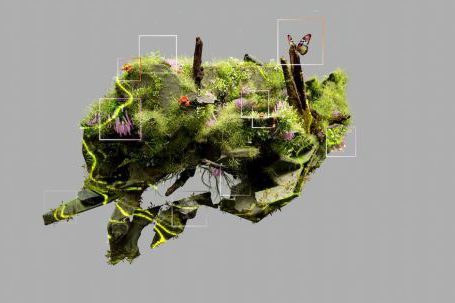Arid regions, with their scorching heat, limited rainfall, and barren landscapes, may seem like inhospitable places for life to thrive. However, hidden within these seemingly desolate environments are terrestrial ecosystems that serve as oases of life. These ecosystems have adapted to the harsh conditions, showcasing the resilience and diversity of life on our planet.
Adaptations to Survive
In arid regions, water is scarce, making it the most critical resource for survival. The flora and fauna in terrestrial ecosystems have evolved various adaptations to cope with the limited water availability. Plants, for instance, have developed deep root systems to access groundwater, while others have waxy leaves or small surface area to minimize water loss through evaporation. Some plants even have succulent leaves or stems that store water for prolonged periods.
Animal species in arid regions have also evolved unique adaptations to survive. Desert rodents, like kangaroo rats, obtain most of their water needs through metabolic water, which is produced during the breakdown of food. This allows them to survive without drinking water for extended periods. Camels, known as the “ships of the desert,” have humps that store fat and not water as commonly believed. The fat is a source of energy during long periods without food, enabling them to go for days without drinking.
Biodiversity in Arid Regions
Contrary to popular belief, arid regions are not devoid of life. In fact, they are home to a surprising amount of biodiversity. Terrestrial ecosystems in arid regions host a wide range of plant and animal species that have adapted to survive in the harsh conditions. From cacti and succulents to reptiles and insects, these ecosystems showcase the incredible adaptability and tenacity of life.
One notable example of biodiversity in arid regions is the Sahara Desert. Despite its reputation as an inhospitable wasteland, the Sahara teems with life. It is home to a variety of species, including the fennec fox, sand gazelle, and Saharan cheetah. The desert also supports a unique flora, such as the date palm and acacia trees. These species have evolved specialized adaptations to thrive in the extreme conditions, highlighting the resilience of life in arid ecosystems.
The Importance of Terrestrial Ecosystems
Terrestrial ecosystems in arid regions play a crucial role in maintaining the balance of our planet’s ecosystems. They provide habitat for a diverse range of species, many of which are uniquely adapted to these environments. These ecosystems also contribute to the overall health of the planet by regulating climate, preventing erosion, and supporting nutrient cycling.
Furthermore, terrestrial ecosystems in arid regions are of great cultural and economic significance. They have been home to indigenous communities for centuries, who have developed deep connections with these environments. Additionally, many arid regions are rich in mineral resources, making them economically important for mining and extraction industries.
Appreciating and Conserving Arid Ecosystems
Given their importance and the unique biodiversity they support, it is crucial to appreciate and conserve terrestrial ecosystems in arid regions. Sustainable land management practices, such as water conservation and sustainable agriculture, can help mitigate the negative impacts of human activities on these fragile environments. Protecting and restoring these ecosystems not only ensures the survival of the species that call them home but also contributes to global efforts in preserving our planet’s biodiversity.
In conclusion, terrestrial ecosystems in arid regions are far from lifeless. They are unique oases of life, showcasing the remarkable adaptations and diversity of species that have evolved to survive in harsh conditions. These ecosystems play a vital role in maintaining the balance of our planet’s ecosystems and provide cultural and economic benefits. By appreciating and conserving these ecosystems, we contribute to the preservation of our planet’s biodiversity and ensure a sustainable future for all.





